Class 10 : Science (In English) – Lesson 10. The Human Eye and the Colourful World
EXPLANATION & SUMMARY
🔵 Detailed Explanation
🌟 Introduction
🔵 The human eye is a natural optical instrument that allows us to see objects by receiving light.
🟢 It works on the principle of refraction of light through a lens system.
🟡 The colourful world we perceive is due to dispersion, scattering and atmospheric phenomena involving sunlight.
👁️ Structure of the Human Eye
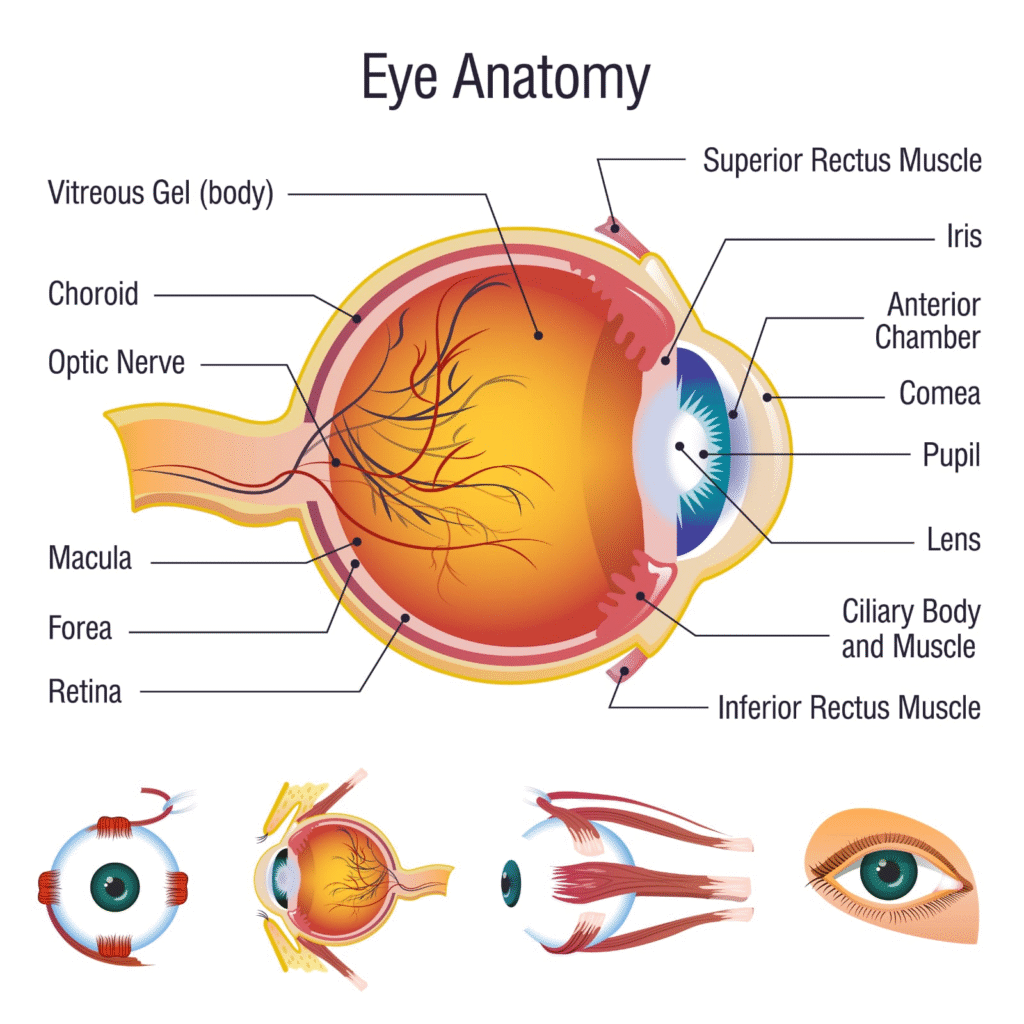
🌿 Cornea: Transparent, curved front surface; refracts most of the light entering the eye.
💧 Aqueous humour: Fluid-filled chamber between cornea and lens; maintains pressure.
🔵 Iris: Coloured diaphragm controlling size of pupil.
🌟 Pupil: Opening that regulates the amount of light entering.
🟣 Eye lens: Transparent, convex lens; refracts light to form image on retina.
🧠 Ciliary muscles: Adjust curvature of lens to change focal length (accommodation).
🟢 Vitreous humour: Transparent jelly filling eye behind lens; maintains shape.
🟡 Retina: Light-sensitive screen; rods (low light) and cones (colour).
🔴 Optic nerve: Carries visual information to brain.
🟠 Functioning of Eye
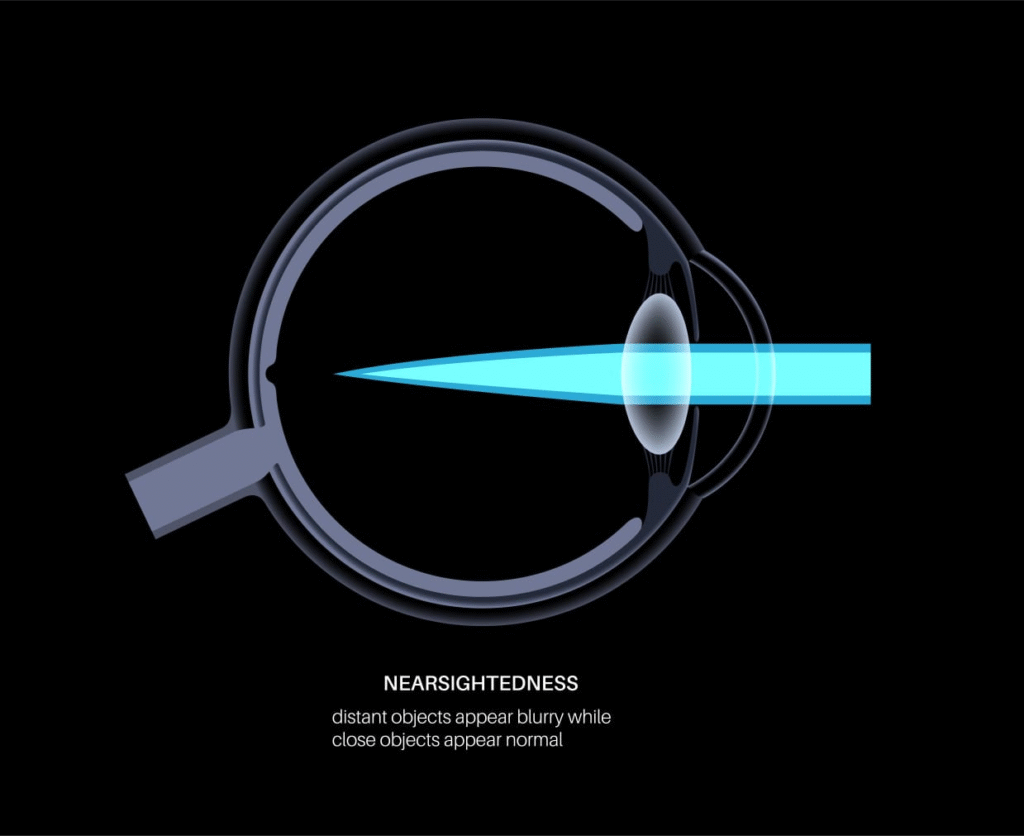
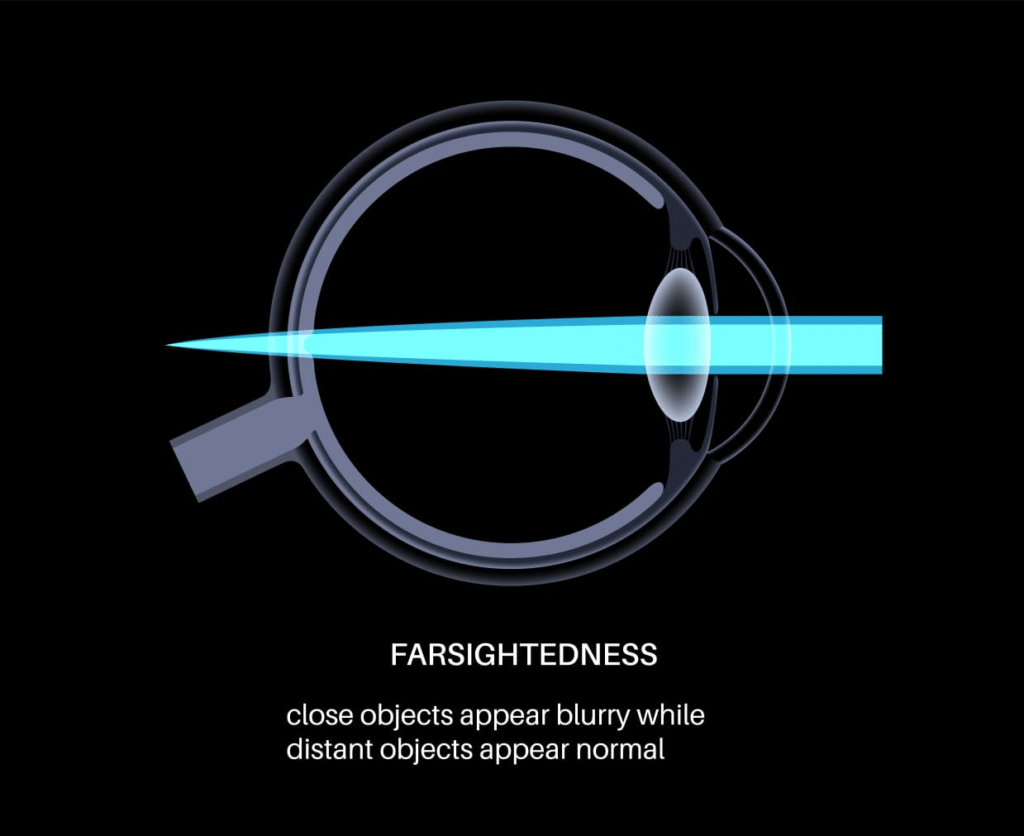
🔵 Light rays enter through cornea → refracted.
🟢 Pass through aqueous humour, pupil, and lens.
🟡 Lens focuses rays to form real, inverted image on retina.
🧠 Retina converts into electrical signals → brain interprets as upright image.
🔴 Power of Accommodation
🌿 Eye lens can change focal length from about 2.27 cm to 2.72 cm.
🟢 Enables us to see both nearby and distant objects clearly.
💧 Near point (least distance of distinct vision) = 25 cm (for a normal eye).
🌍 Far point = Infinity (for a normal eye).
👓 Defects of Vision and their Correction
Myopia (Near-sightedness)

🔵 Cannot see distant objects clearly.
Cause: Elongated eyeball / lens too curved.
Image forms before retina.
Correction: Concave lens (diverges rays).
Hypermetropia (Far-sightedness)
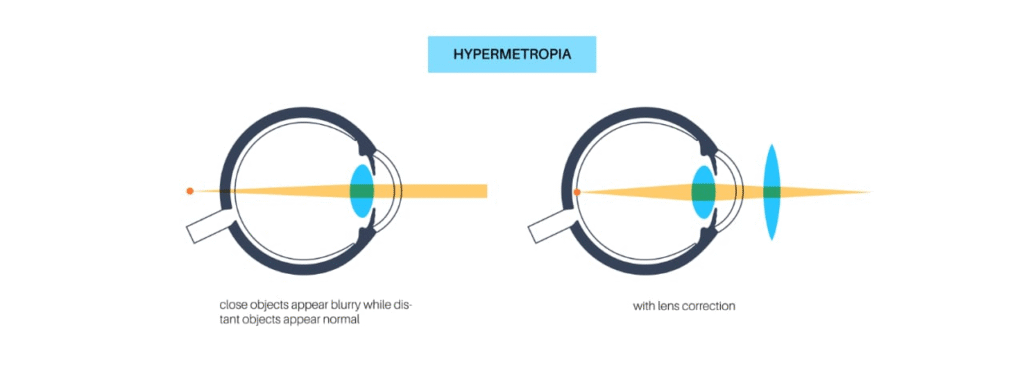
🟢 Cannot see nearby objects clearly.
Cause: Short eyeball / lens less curved.
Image forms behind retina.
Correction: Convex lens (converges rays).
Presbyopia
🟡 Age-related weakening of ciliary muscles.
Both near and far vision problems.
Correction: Bifocal lenses.
Astigmatism (not always in NCERT but relevant)
Blurred vision due to irregular curvature of cornea/lens.
Correction: Cylindrical lenses.
🌈 Refraction of Light through Atmosphere
🔵 Stars appear to twinkle because starlight refracts continuously due to changing air density in atmosphere.
🟢 Planets do not twinkle significantly (appear larger, closer).
🟡 Apparent shift in star position also due to atmospheric refraction.
🌍 Dispersion of Light by Prism
🔵 White light splits into seven colours (VIBGYOR).
🟢 Cause: Different refractive indices for different wavelengths.
🌈 Violet deviates most, red deviates least.
✨ Newton’s experiment proved sunlight is a mixture of colours.
🌞 Phenomena of Colourful World
Rainbow
🌿 Due to dispersion, refraction and reflection in water droplets.
Sunlight splits → forms concentric arcs.
Scattering of Light
🔵 Small particles scatter shorter wavelengths (blue).
🟢 Sky appears blue.
🟡 At sunrise/sunset, sunlight travels longer path → blue scattered away, red remains → reddish sun.
Tyndall Effect
🌟 Scattering of light by colloidal particles.
Example: Sunlight entering a dark room through a hole appears as visible beam.
🧮 Formulae / Key Values (copy-safe)
Power of lens: P = 100 / f (f in cm).
Near point (normal eye): 25 cm.
Far point (normal eye): Infinity.
Range of accommodation: From 25 cm to ∞.
🟢 Summary (for quick revision)
🔵 Eye lens adjusts focal length → accommodation.
🟢 Defects: Myopia (concave lens), Hypermetropia (convex lens), Presbyopia (bifocals).
🟡 Twinkling of stars = atmospheric refraction.
🔴 Rainbow = dispersion, refraction, reflection in droplets.
🌍 Sky blue = scattering of short wavelengths; sunrise/sunset red = scattering of longer path.
📝 Quick Recap
👁️ Human eye is a natural lens system forming real images on retina.
🌟 Near point = 25 cm; far point = ∞.
👓 Myopia → concave lens; Hypermetropia → convex lens; Presbyopia → bifocal.
🌈 White light disperses into VIBGYOR by prism.
🔵 Sky blue, 🌞 red sunrise/sunset due to scattering.
🌦️ Rainbow by dispersion, reflection, refraction in droplets.
————————————————————————————————————————————————————————————————————————————
QUESTIONS FROM TEXTBOOK
Question 1
The human eye can focus on objects at different distances by adjusting the focal length of the eye lens. This is due to
(a) presbyopia
(b) accommodation
(c) near-sightedness
(d) far-sightedness
Answer
🔵 This ability of the eye lens to adjust its focal length is called accommodation.
✔️ Correct option: (b) accommodation
Question 2
The human eye forms the image of an object at its
(a) cornea
(b) iris
(c) pupil
(d) retina
Answer
🟢 The retina is the light-sensitive screen where real, inverted image is formed.
✔️ Correct option: (d) retina
Question 3
The least distance of distinct vision for a young adult with normal vision is about
(a) 25 m
(b) 2.5 cm
(c) 25 cm
(d) 2.5 m
Answer
🌟 For a normal healthy eye, least distance of distinct vision = 25 cm.
✔️ Correct option: (c) 25 cm
Question 4
The change in focal length of an eye lens is caused by the action of the
(a) pupil
(b) retina
(c) ciliary muscles
(d) iris
Answer
💧 Ciliary muscles alter curvature of the eye lens to change focal length.
✔️ Correct option: (c) ciliary muscles
Question 5
A person needs a lens of power –5.5 dioptres for correcting his distant vision. For correcting his near vision he needs a lens of power +1.5 dioptre. What is the focal length of the lens required for correcting (i) distant vision, and (ii) near vision?
Answer
🔵 Formula: f = 100 / P (f in cm, P in dioptres)
(i) For P = –5.5 D → f = 100 / –5.5 ≈ –18.18 cm → concave lens.
(ii) For P = +1.5 D → f = 100 / 1.5 ≈ +66.7 cm → convex lens.
✔️ Correction: Distant vision → concave lens of f ≈ –18 cm; Near vision → convex lens of f ≈ +67 cm.
Question 6
The far point of a myopic person is 80 cm in front of the eye. What is the nature and power of the lens required to correct the problem?
Answer
🌿 For myopia, far point < ∞.
Far point = 80 cm → object at infinity should form image at 80 cm.
Lens formula: 1/f = 1/v – 1/u
u = ∞, v = –80 cm → f = –80 cm.
Power = 100 / f = 100 / –80 = –1.25 D.
✔️ Correction: Concave lens of power –1.25 D.
Question 7
Make a diagram to show how hypermetropia is corrected. The near point of a hypermetropic eye is 1 m. What is the power of the lens required to correct this defect? Assume that the near point of the normal eye is 25 cm.
Answer
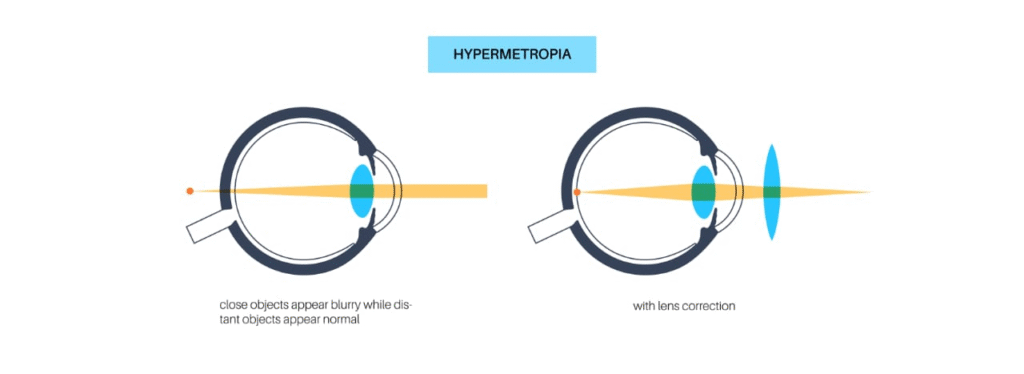
🔵 For hypermetropia: object at 25 cm should appear at 100 cm.
Lens formula: 1/f = 1/v – 1/u
u = –25 cm, v = –100 cm
1/f = (–1/100) – (–1/25) = –0.01 + 0.04 = 0.03 → f = 33.3 cm.
Power = 100 / f = 100 / 33.3 ≈ +3 D.
✔️ Correction: Convex lens of +3 D.
✏️ Diagram (to be drawn in exam): Convex lens placed in front of hypermetropic eye, converging rays onto retina.
Question 8
Why is a normal eye not able to see clearly the objects placed closer than 25 cm?
Answer
🟢 The ciliary muscles cannot increase curvature of lens beyond a limit.
🔵 Hence focal length cannot be shortened further.
✔️ So rays from objects closer than 25 cm are not focused on retina → blurred vision.
Question 9
What happens to the image distance in the eye when we increase the distance of an object from the eye?
Answer
🌟 The image distance (lens to retina) is fixed.
🟡 Eye lens changes focal length by accommodation.
✔️ Image distance remains constant; only focal length varies.
Question 10
Why do stars twinkle?
Answer
🔵 Starlight passes through Earth’s atmosphere, layers of varying refractive index.
🟢 Light undergoes continuous atmospheric refraction.
🟡 Apparent brightness changes → star appears to twinkle.
Question 11
Explain why the planets do not twinkle.
Answer
🌍 Planets are much closer; they appear as extended sources of light.
🔵 The effects of atmospheric refraction from different parts average out.
✔️ Thus planets shine steadily without noticeable twinkling.
Question 12
Why does the sky appear dark instead of blue to an astronaut?
Answer
💧 Scattering of light requires atmosphere.
🌌 Space has no atmosphere → no scattering.
✔️ Hence sky appears dark/black to astronauts.
————————————————————————————————————————————————————————————————————————————
OTHER IMPORTANT QUESTIONS FOR EXAMS
Question 1
The least distance of distinct vision for a normal adult human eye is:
25 m
25 cm
2.5 cm
2.5 m
Answer: 2 🟢
Question 2
Which part of the eye controls the size of the pupil?
Retina
Cornea
Iris
Ciliary muscles
Answer: 3 🌿
Question 3
The defect of vision in which a person cannot see distant objects clearly is:
Hypermetropia
Presbyopia
Astigmatism
Myopia
Answer: 4 🔵
Question 4
Which lens is used to correct hypermetropia?
Concave lens
Convex lens
Cylindrical lens
Bifocal
Answer: 2 👓
Question 5
The far point of a myopic person is 80 cm. The power of lens required to correct vision is:
–1.25 D
+1.25 D
–2.5 D
+2.5 D
Answer: 1 💧
Question 6
Which colour of light deviates the least while passing through a prism?
Blue
Red
Violet
Green
Answer: 2 🔴
Question 7
The scattering of light by colloidal particles is called:
Tyndall effect
Diffraction
Dispersion
Reflection
Answer: 1 ✨
Question 8
The sky appears reddish during sunrise and sunset due to:
Reflection
Dispersion
Scattering
Refraction
Answer: 3 🌍
Question 9
Which phenomenon causes twinkling of stars?
Dispersion
Refraction
Scattering
Atmospheric refraction
Answer: 4 🌌
Question 10
Planets do not twinkle because:
They are nearer and act as extended sources
They are larger
They have no atmosphere
They emit strong light
Answer: 1 🟠
Question 11
Assertion (A): The human eye forms a real image on retina.
Reason (R): Retina acts as a light-sensitive screen.
Both A and R true, R correct explanation
Both A and R true, R not explanation
A true, R false
A false, R true
Answer: 1 ✔️
Question 12
A: Accommodation is the ability of the eye lens to adjust focal length.
R: Ciliary muscles are responsible for this change.
Answer: 1 🧠
Question 13
A: Myopia is corrected by convex lens.
R: Convex lens diverges light rays.
Answer: 4 ❌ (Myopia corrected by concave lens)
Question 14
A: Hypermetropia occurs when eyeball is shorter.
R: Image is formed behind retina.
Answer: 1 🌿
Question 15
A: Presbyopia occurs in old age.
R: It is due to weakening of ciliary muscles.
Answer: 1 🟡
Question 16
A: Dispersion is splitting of white light into constituent colours.
R: Red light bends most, violet least.
Answer: 3 ❌ (Violet bends most, red least)
Question 17
A: Twinkling of stars is due to scattering.
R: Atmospheric refraction changes path of starlight.
Answer: 3 🟣 (Twinkling is refraction, not scattering)
Question 18
A: The Tyndall effect can be observed in a smoke-filled room with sunlight.
R: Colloidal particles scatter light.
Answer: 1 ✨
Question 19
A: Red colour of Sun at sunrise is due to scattering of light.
R: At that time, shorter wavelengths are scattered away.
Answer: 1 🔴
Question 20
A: Astronauts see sky as dark.
R: No atmosphere in space to scatter light.
Answer: 1 🌌
🟢 Section B (Q21–26: Very Short Answers, 2 marks each)
Question 21
What is meant by accommodation of the human eye?
Answer:
🔵 The ability of the eye lens to change its focal length using ciliary muscles.
🟢 Enables focusing of objects at varying distances.
Question 22
Define the least distance of distinct vision.
Answer:
🌿 It is the minimum distance from the eye at which objects can be seen clearly without strain.
🟡 For a normal eye, it is 25 cm.
Question 23
Why does the sky appear blue?
Answer:
🔵 Due to scattering of light by atmospheric molecules.
🟢 Shorter wavelengths (blue) scatter more than longer (red).
Question 24
Why does the sky appear dark to astronauts?
Answer:
🌌 Absence of atmosphere in space.
🟡 Without scattering, sky appears dark/black.
Question 25
What is the cause of twinkling of stars?
Answer:
🔵 Due to continuous atmospheric refraction of starlight.
🟢 Star’s apparent position fluctuates → twinkling effect.
Question 26
State two differences between myopia and hypermetropia.
Answer:
🟠 Myopia → cannot see distant objects; Hypermetropia → cannot see near objects.
🟣 Myopia → corrected by concave lens; Hypermetropia → corrected by convex lens.
🟡 Section C (Q27–33: Short Answers, 3 marks each)
Question 27
What is presbyopia? How is it corrected?
Answer:
🔵 Defect of vision due to ageing.
🟢 Caused by weakening of ciliary muscles → reduced accommodation.
🟡 Corrected using bifocal lenses.
Question 28
Explain the Tyndall effect with an example.
Answer:
🌿 Tyndall effect: scattering of light by colloidal particles.
🟢 Examples: Sunbeam through trees, light through smoky room.
🟡 Demonstrates scattering by small suspended particles.
Question 29
Why do stars appear higher than their actual position?
Answer:
🔵 Starlight refracts continuously in atmosphere.
🟢 Apparent bending makes them look slightly higher.
🟡 Effect is due to atmospheric refraction.
Question 30
A person needs lens of +2.5 D for reading. Identify the defect and focal length.
Answer:
🔵 Defect: Hypermetropia.
🟢 Focal length f = 100 / 2.5 = 40 cm.
🟡 Corrected by convex lens.
Question 31
Why do planets not twinkle?
Answer:
🌍 Planets are closer, appear as extended sources.
🟢 Different rays average out atmospheric effects.
🟡 Hence steady light without twinkling.
Question 32
What are the causes of myopia?
Answer:
🔵 Eyeball lengthened.
🟢 Eye lens too curved.
🟡 Image forms before retina.
Question 33
State causes and correction of hypermetropia.
Answer:
🔵 Eyeball shortened or eye lens less curved.
🟢 Image forms behind retina.
🟡 Corrected by convex lens.
Question 34
Explain with ray diagrams how myopia and hypermetropia are corrected using suitable lenses.
Answer
🔵 Myopia (near-sightedness):
Distant objects appear blurred because image forms before retina.
Causes: elongated eyeball / lens too curved.
Correction: concave lens diverges rays → image shifted back to retina.
🟢 Hypermetropia (far-sightedness):
Nearby objects appear blurred because image forms behind retina.
Causes: shortened eyeball / lens less curved.
Correction: convex lens converges rays → image shifted forward to retina.
✏️ In ray diagrams: concave lens spreads rays (for myopia), convex lens bends rays inward (for hypermetropia).
Question 35
Describe atmospheric refraction with two phenomena explained by it.
Answer
🌍 Atmospheric refraction: bending of light when it passes through layers of air of varying density (refractive index).
🔵 Examples:
Apparent shift of stars → they appear slightly higher than their actual position.
Twinkling of stars → changing density causes variation in brightness and position.
✔️ Atmospheric refraction makes stars twinkle and shifts their apparent position.
Question 36
Explain the formation of a rainbow.
Answer
🌈 Rainbow forms when sunlight interacts with raindrops in the atmosphere.
🟢 Process:
Refraction at surface of raindrop → white light splits into seven colours.
Internal reflection inside droplet.
Refraction again as light emerges.
🔴 Order of colours: Violet (innermost) to Red (outermost).
🧠 Each colour appears at a specific angle → forms concentric arcs.
✔️ Rainbow = combined effect of dispersion, refraction, internal reflection in raindrops.
🟣 Section E (Q37–Q39: Case/Source Based, 4 marks each)
Question 37
Case: A student observes the Sun at sunset appears reddish.
Questions
(a) Which phenomenon is responsible?
(b) Why is blue light not seen?
(c) What happens to path length of sunlight at this time?
(d) State colour of Sun at noon and why.
Answer
(a) Scattering of light.
(b) Shorter wavelengths (blue) are scattered away.
(c) Path length is maximum at sunrise/sunset.
(d) White/yellowish at noon (least scattering, Sun overhead).
Question 38
Case: A ray of white light enters a glass prism.
Questions
(a) What phenomenon is observed?
(b) Which colour deviates most?
(c) Which colour deviates least?
(d) Name the scientist who proved sunlight is a mixture of colours.
Answer
(a) Dispersion of light.
(b) Violet.
(c) Red.
(d) Newton.
Question 39
Case: An astronaut in space looks at the sky and sees it black.
Questions
(a) Why is the sky blue on Earth?
(b) Why is it black in space?
(c) Name the phenomenon responsible for blue sky.
(d) Name the phenomenon responsible for reddish appearance of Sun at sunrise.
Answer
(a) Blue due to scattering of shorter wavelengths.
(b) Space has no atmosphere → no scattering.
(c) Rayleigh scattering.
(d) Scattering of light over long path.
————————————————————————————————————————————————————————————————————————————
MIND MAPS
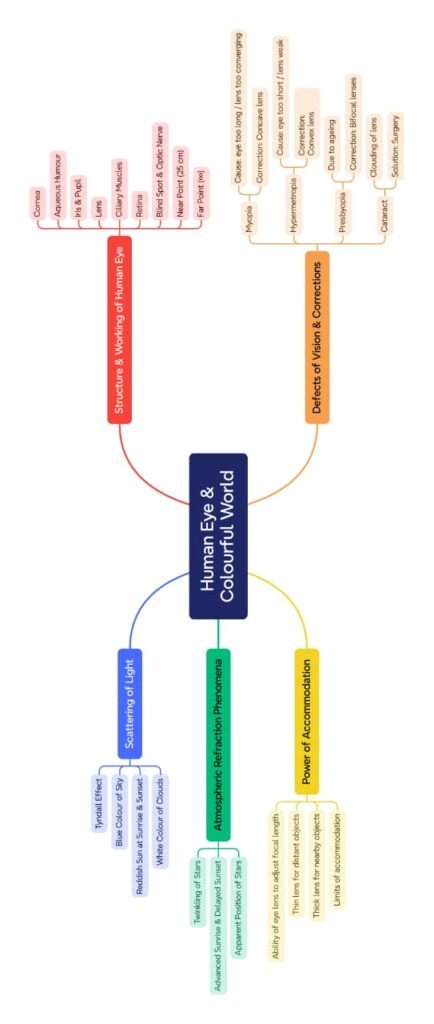
————————————————————————————————————————————————————————————————————————————
